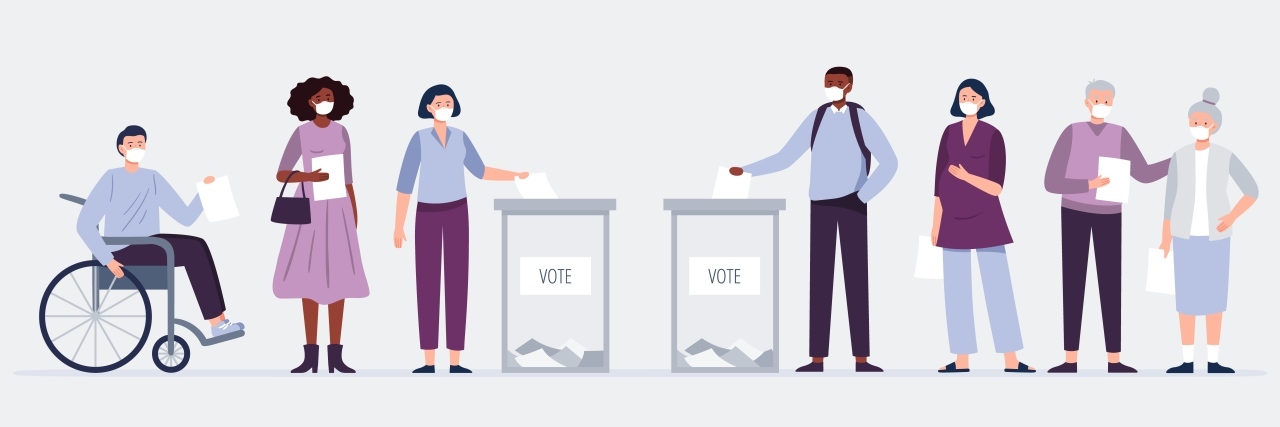Voting has been a hot topic over the past few months. I would like to take this opportunity to shed light on the disabled vote and the challenges the disabled community faces when it comes to casting our ballots. Disabled voters deal with a blatant lack of accessibility when it comes to voting either in-person or by absentee ballot, and although the lack of accessibility is unacceptable, it is still the reality many disabled voters face today. Due to the lack of accessibility, people with disabilities vote at a lower rate than the able-bodied community, with the disabled voter participation rate consistently going down over the last three presidential elections. Today, only 40% of polling places accommodate people with disabilities.
As crazy as it may seem, it was only in the year 2000 that polling locations were required to have at least one accessible voting machine. Up until that point, only 16% of polling locations were accessible and the disabled community was often left out of politics. They were considered second-class citizens.
Although accessibility for disabled voters has come a long way over the last 20 years, we are still far from where we need to be. In 2016, an inspection was done by the Government Accountability Office and nearly 2/3rds of the inspected polling places had at least one impediment to the disabled community. Although that is an improvement from the inspection done in 2008, it still isn’t enough. Some of the most common violations include the accessible voting machine not being set up or turned on, the polling location not being wheelchair accessible, or there being a lack of privacy for disabled voters while they cast their votes.
Today, over 35 million voting-age Americans (1 out of every 5 people) have a disability with 1/3rd of disabled voters having trouble casting their ballots. Some common issues disabled voters experience when hitting the polls are doors not being wide enough to accommodate extra-wide or motorized wheelchairs, buildings having unusable ramps due to them falling into disrepair or being too steep, pathways being obstructed, polling locations lacking sufficient accessible parking, and doors being locked and elevators broken. Also, the disabled community is less likely to drive and many places across the USA do not have accessible public transportation to take disabled voters to the polls. This brings a whole other set of issues caused by mail-in and absentee voting.
Although voting by mail is a great option for many people with disabilities, myself included, it is not a viable option for many people with a wide range of disabilities. Many disabilities make it impossible to mark a paper ballot, forcing these voters to physically go to the polls or not vote. Some people choose to give up their legal right to a secret ballot and rely on someone else to fill out their ballot for them, however, you have to trust that they are actually marking the candidate of your choosing and putting the ballot in the mail for you. That is why many disabled voters choose to hit the polls, but unfortunately, if the polling location isn’t accessible, their vote is not heard.
This year, when 43 states that added an accessible electronic absentee voting option were investigated, the PDF applications on all 43 states’ websites had at least one issue that made the application incompatible with assistive technology such as screen readers. Overall, the states’ websites averaged 10 accessibility issues per application. Because of this, some people could not even complete the application for accessible electronic absentee voting, let alone cast their votes.
Having an election in the midst of a global health crisis also brings a unique set of issues the disabled community never anticipated. People will have to risk their health by waiting in crowded lines, use voting machines that have been touched by many others, and vote in poorly ventilated buildings with people who haven’t been taking any precautions in regards to COVID-19, all in order to vote. Disabled voters already face many barriers during the voting process, and this pandemic is just the icing on the cake.
Now more than ever, disabled voters need to vote because of hot button issues that directly impact their lives, one example being the future of healthcare in America. The system is failing the disabled community once again and we need America to start caring. We need voting to be accessible to all disabled Americans.
This story originally appeared on A Life Full of Grace and Mito.
Getty image by Jenny on the Moon.

